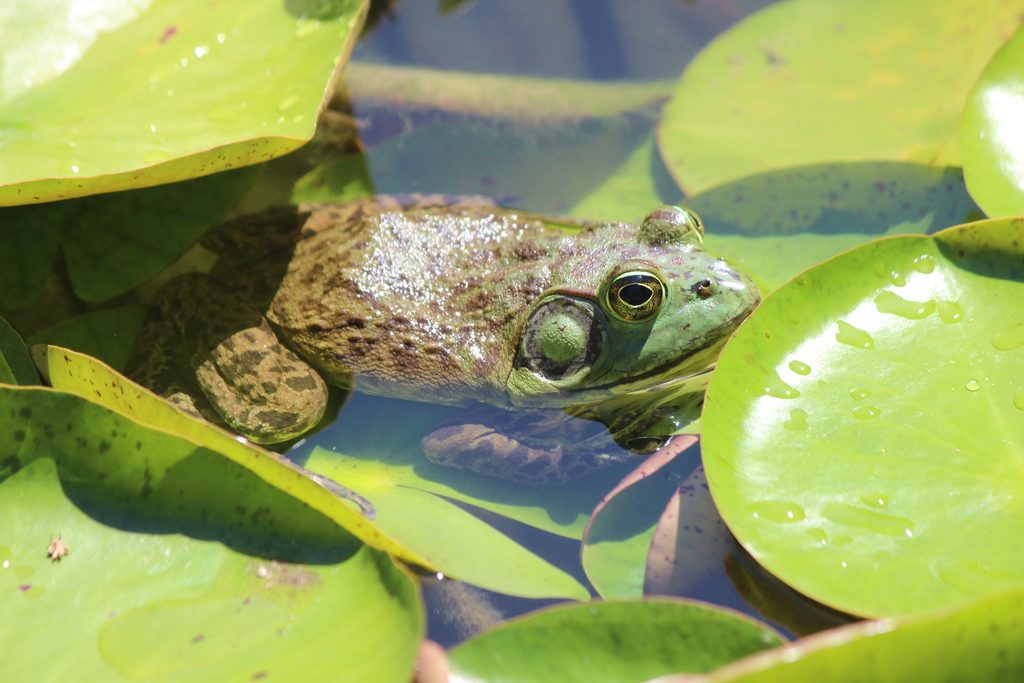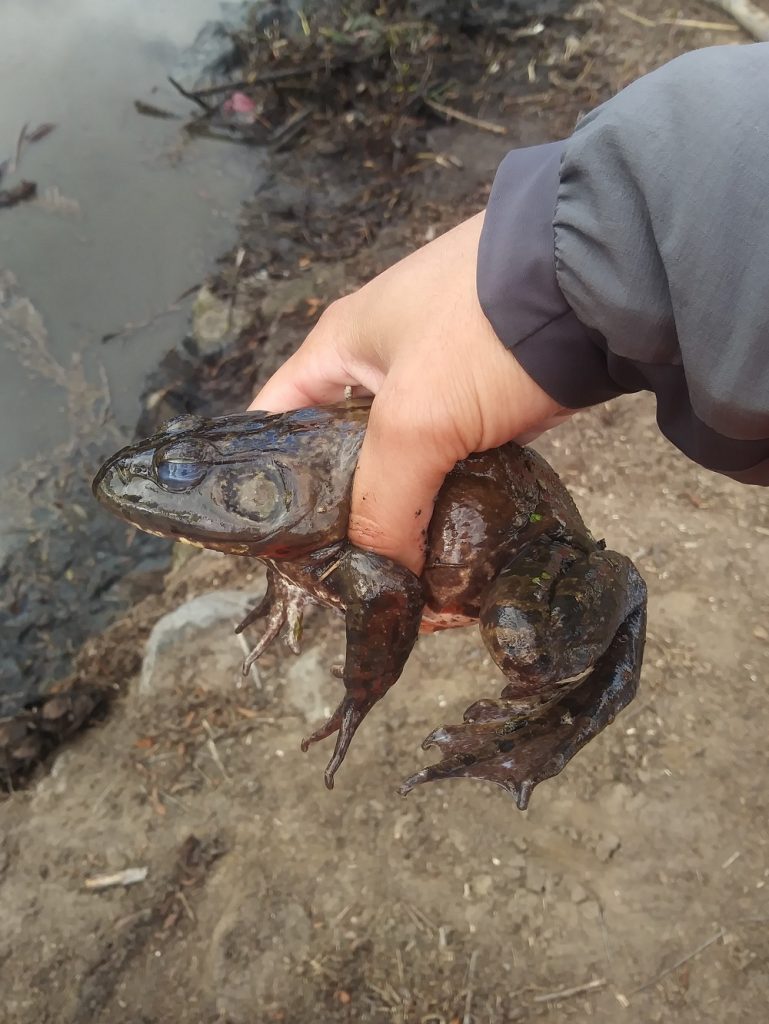
FAMILY
Ranidae, the most widely distributed frog family
NATIVE RANGE
Central and Eastern U.S. (excluding Southern Florida and Northern Maine) [1]; Nova Scotia and New Brunswick in Canada; Eastern Mexico
INTRODUCED RANGE
Western U.S., Hawaii, Puerto Rico, as well as several areas in Europe, Asia, and South America [2]
Important Environmental Factors

Low to moderate levels of paved or compacted ground

Low to moderate summer rainfall

Low to moderate variation in daily temperature
Appearance
Mature bullfrogs are light to dark olive green with brown spots. Their bellies may be white, grey, or pale yellow. Adults can weigh over two pounds and grow up to 8 inches long. Tadpoles are greenish-yellow in color with small dark spots, and may be up to 6 inches long.
Habitat and Behavior
The American bullfrog is a widespread amphibian species that has been introduced to over 40 countries across four continents [2]. While they can sometimes inhabit temporary sources of water, they are more commonly found in permanent water bodies such as lakes, ponds, marshes, the slower waters of streams or rivers, and artificial habitats (e.g. cattle ponds and reservoirs). They have a diverse diet that includes algae and insects, as well as other bullfrogs and small vertebrates like fish, turtles, birds, snakes, and rodents. They will also prey on their own tadpoles. Adults breed in the summer and can produce up to 20,000 eggs in a single clutch (i.e. group of eggs) [1]. They can live for 8-10 years in the wild.
Impact in California
American bullfrogs were introduced to the Western U.S. both on purpose and accidentally. They were intentionally introduced as a food source and biological control for insects [3], but likely also made their way here via fish stocking [1]. They have impacted native species and ecosystems in several ways. First, they outcompete and prey on native species (including the endangered the California red-legged frog) [2]. The bullfrog tadpoles may affect nutrient cycling and primary production in freshwater habitats due to their high densities and food intake. Finally, American bullfrogs are carriers of chytrid fungus, the cause of a fatal skin disease in many native amphibians. This disease, chytridiomycosis, is believed to be the primary cause of global amphibian declines [3].
Management
Because of their high densities and reproduction rates, American bullfrogs are fairly difficult to eradicate. Manual removal is possible for small ponds and isolated invasions, but is less effective on a larger scale [4]. Indirect control through habitat manipulation is another option: researchers have found that occasional or seasonal drying can eliminate bullfrogs from ponds. However, these activities are not always possible. It is also important to remember that American bullfrogs continue to be introduced and spread through California, often aided by humans. Some escape from research facilities, or are released by pet owners [3]. Preventing introduction or full establishment in new locations is an extremely important part of managing bullfrogs in California.

Data source:
Species records provided by iNaturalist
References:
- McKercher and Gregoire (2018), Lithobates catesbeianus (Shaw, 1802): U.S. Geological Survey, Nonindigenous Aquatic Species Database, Gainesville, FL [link]
- U.S. Fish and Wildlife Service (2015). American Bullfrog (Lithobates catesbeianus) Ecological Risk Screening Summary [link]
- California Department of Fish and Wildlife. California’s Invaders: American Bullfrog. [link]
- Adams and Pearl (2007) in Biological invaders in inland waters: Profiles, distribution, and threats (pp. 679-693)